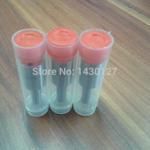Information injection-pump assembly
BOSCH
9 400 614 632
9400614632
ZEXEL
101601-5860
1016015860
HINO
220203800A
220203800a

Rating:
Service parts 101601-5860 INJECTION-PUMP ASSEMBLY:
1.
_
7.
COUPLING PLATE
8.
_
9.
_
11.
Nozzle and Holder
23600-2133
12.
Open Pre:MPa(Kqf/cm2)
19.6{200}
15.
NOZZLE SET
Include in #1:
101601-5860
as INJECTION-PUMP ASSEMBLY
Include in #2:
104139-4001
as _
Cross reference number
BOSCH
9 400 614 632
9400614632
ZEXEL
101601-5860
1016015860
HINO
220203800A
220203800a
Zexel num
Bosch num
Firm num
Name
Calibration Data:
Adjustment conditions
Test oil
1404 Test oil ISO4113 or {SAEJ967d}
1404 Test oil ISO4113 or {SAEJ967d}
Test oil temperature
degC
40
40
45
Nozzle and nozzle holder
105780-8140
Bosch type code
EF8511/9A
Nozzle
105780-0000
Bosch type code
DN12SD12T
Nozzle holder
105780-2080
Bosch type code
EF8511/9
Opening pressure
MPa
17.2
Opening pressure
kgf/cm2
175
Injection pipe
Outer diameter - inner diameter - length (mm) mm 6-2-600
Outer diameter - inner diameter - length (mm) mm 6-2-600
Overflow valve
134424-0920
Overflow valve opening pressure
kPa
162
147
177
Overflow valve opening pressure
kgf/cm2
1.65
1.5
1.8
Tester oil delivery pressure
kPa
157
157
157
Tester oil delivery pressure
kgf/cm2
1.6
1.6
1.6
Direction of rotation (viewed from drive side)
Right R
Right R
Injection timing adjustment
Direction of rotation (viewed from drive side)
Right R
Right R
Injection order
1-4-2-6-
3-5
Pre-stroke
mm
3.8
3.77
3.83
Beginning of injection position
Drive side NO.1
Drive side NO.1
Difference between angles 1
Cal 1-4 deg. 60 59.75 60.25
Cal 1-4 deg. 60 59.75 60.25
Difference between angles 2
Cyl.1-2 deg. 120 119.75 120.25
Cyl.1-2 deg. 120 119.75 120.25
Difference between angles 3
Cal 1-6 deg. 180 179.75 180.25
Cal 1-6 deg. 180 179.75 180.25
Difference between angles 4
Cal 1-3 deg. 240 239.75 240.25
Cal 1-3 deg. 240 239.75 240.25
Difference between angles 5
Cal 1-5 deg. 300 299.75 300.25
Cal 1-5 deg. 300 299.75 300.25
Injection quantity adjustment
Adjusting point
A
Rack position
9.5
Pump speed
r/min
1250
1250
1250
Average injection quantity
mm3/st.
98.4
96.4
100.4
Max. variation between cylinders
%
0
-3.5
3.5
Basic
*
Fixing the lever
*
Injection quantity adjustment_02
Adjusting point
-
Rack position
6.1+-0.5
Pump speed
r/min
650
650
650
Average injection quantity
mm3/st.
10
9
11
Max. variation between cylinders
%
0
-10
10
Fixing the rack
*
Remarks
Adjust only variation between cylinders; adjust governor according to governor specifications.
Adjust only variation between cylinders; adjust governor according to governor specifications.
Timer adjustment
Pump speed
r/min
925--
Advance angle
deg.
0
0
0
Remarks
Start
Start
Timer adjustment_02
Pump speed
r/min
875
Advance angle
deg.
0.5
Timer adjustment_03
Pump speed
r/min
1250
Advance angle
deg.
3.5
3
4
Remarks
Finish
Finish
Test data Ex:
Governor adjustment
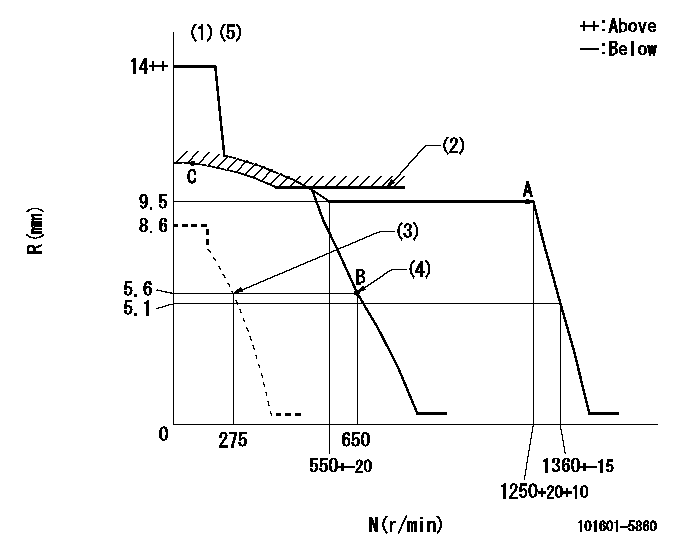
N:Pump speed
R:Rack position (mm)
(1)Target notch: K
(2)SMA RACK LIMIT; RAL
(3)Set idle sub-spring
(4)Main spring setting
(5)Perform governor adjustment at an ambient temperature of at least 15 deg C (rack limit spring is shape memory alloy).
----------
K=12 RAL=9.7+0.2mm
----------
----------
K=12 RAL=9.7+0.2mm
----------
Speed control lever angle
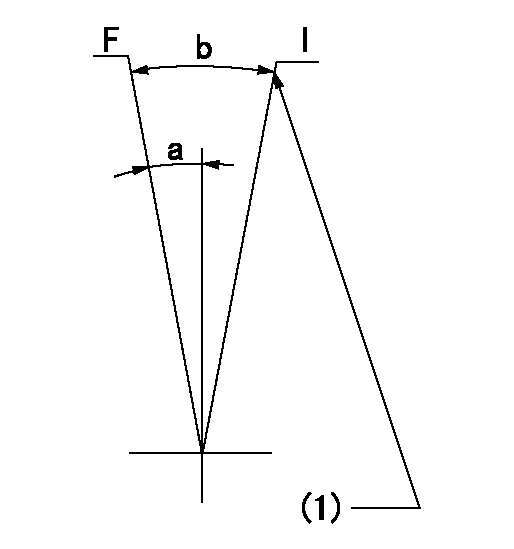
F:Full speed
I:Idle
(1)Stopper bolt setting
----------
----------
a=10deg+-5deg b=18deg+-5deg
----------
----------
a=10deg+-5deg b=18deg+-5deg
Stop lever angle
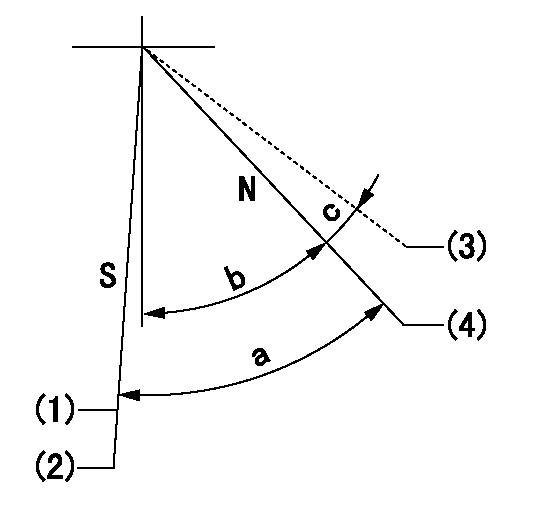
N:Pump normal
S:Stop the pump.
(1)Rack position aa or less, pump speed bb
(2)At shipping
(3)Contacts normal side pin
(4)Clearance from the pin on the normal side: cc
----------
aa=5.1mm bb=0r/min cc=2.5+-0.5mm
----------
a=53deg+-5deg b=51deg+-5deg c=(6deg)
----------
aa=5.1mm bb=0r/min cc=2.5+-0.5mm
----------
a=53deg+-5deg b=51deg+-5deg c=(6deg)
Timing setting
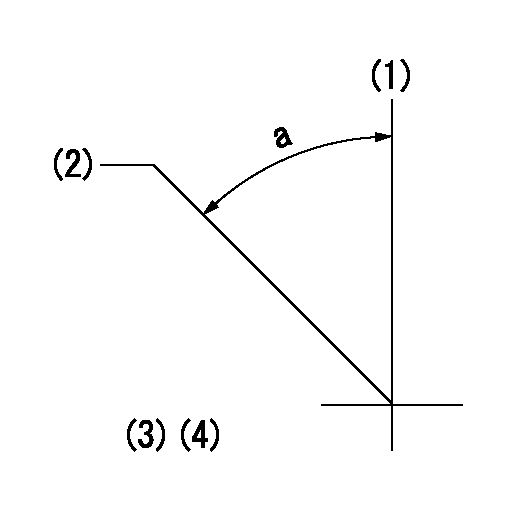
(1)Pump vertical direction
(2)Coupling's key groove position at No 1 cylinder's beginning of injection
(3)-
(4)-
----------
----------
a=(50deg)
----------
----------
a=(50deg)
Information:
Engine Oil Pressure
The sensor utilizes engine oil pressure and engine speed to perform low engine oil pressure detection for diagnostic and annunciation.The graph below illustrates the limits of low engine oil pressure diagnostic and annunciation. The output from the ECM can be used to drive a relay or a lamp to annunciate Low Oil Pressure conditions.
Oil Pressure ParametersLow Oil Pressure Alarm
Oil pressure sensor location.The sensor is mounted in the front of the engine cylinder block with oil lines connected to the switch. Low engine oil pressure closes the switch.The oil pressure switch senses oil pressure at the bearing oil gallery. No resetting procedure is required. Switches may close at 48 to 62 kPa (7 to 9 psi) below actual trip point.Oil Pressure Sensor Failure
When the sensor output is open, shorted to ground or supply, or measured oil pressure reading is out of specification, a sensor failure may have occurred.The ECM will detect the oil pressure sensor failure and through the diagnostic lamp warn the user about the oil pressure sensor failure. The oil pressure related strategies will be disabled. The oil pressure sensor failure will not cause an engine shut down, power derating, or any engine speed change.Speed Sensing Loss Alarm
When the engine speed sensor can no longer sense engine speed, an alarm and diagnostic code entry will occur. If the ECM can not detect any engine speed, the engine will shut down.Manual Fuel Shutoff Lever
Do not use the emergency shutoff control for a normal stopping procedure.
Manual shutdown shaft with lever location.A manual shutdown shaft is provided to override the governor solenoid. This shutdown will only move the fuel control linkage to the fuel OFF position to starve the engine of fuel. It does not shut off the air inlet.Engine Shutoff Controls
Secondary shutoff controls may be electrically, mechanically or hydraulically operated. Familiarize yourself with the types and locations of the shutoff controls, the conditions which cause each control to function, and the resetting procedure required to start your engine.The shutoff controls should be tested every 1000 hours by authorized Caterpillar dealer personnel.Always determine the cause of the shutdown, and have the necessary repairs made before restarting the engine.Shutoff Solenoid Failure
When the shutoff solenoid output is open or shorted to ground or supply, a failure may have occurred.The ECM will detect open or short condition of the shutoff solenoid. If the solenoid is failed "open", the engine will shut down.The shutoff solenoid failure will cause the engine to shut down, but the pilot or service personnel can mechanically reposition the shutoff solenoid and restart the engine.Cold Start Strategy
This feature utilizes the coolant temperature sensor input to improve low temperature engine starting and warm-up. It provides quicker cold starts, smoke cleanup, reduces battery "deep" cycling and extends engine life. The engine timing is fixed at 19.5 degrees. Engine block heaters are provided to maintain minimum engine temperature when the engine is not running.When the coolant temperature is below 60°C (140°F), the cold start strategy is activated using the following parameters
The sensor utilizes engine oil pressure and engine speed to perform low engine oil pressure detection for diagnostic and annunciation.The graph below illustrates the limits of low engine oil pressure diagnostic and annunciation. The output from the ECM can be used to drive a relay or a lamp to annunciate Low Oil Pressure conditions.
Oil Pressure ParametersLow Oil Pressure Alarm
Oil pressure sensor location.The sensor is mounted in the front of the engine cylinder block with oil lines connected to the switch. Low engine oil pressure closes the switch.The oil pressure switch senses oil pressure at the bearing oil gallery. No resetting procedure is required. Switches may close at 48 to 62 kPa (7 to 9 psi) below actual trip point.Oil Pressure Sensor Failure
When the sensor output is open, shorted to ground or supply, or measured oil pressure reading is out of specification, a sensor failure may have occurred.The ECM will detect the oil pressure sensor failure and through the diagnostic lamp warn the user about the oil pressure sensor failure. The oil pressure related strategies will be disabled. The oil pressure sensor failure will not cause an engine shut down, power derating, or any engine speed change.Speed Sensing Loss Alarm
When the engine speed sensor can no longer sense engine speed, an alarm and diagnostic code entry will occur. If the ECM can not detect any engine speed, the engine will shut down.Manual Fuel Shutoff Lever
Do not use the emergency shutoff control for a normal stopping procedure.
Manual shutdown shaft with lever location.A manual shutdown shaft is provided to override the governor solenoid. This shutdown will only move the fuel control linkage to the fuel OFF position to starve the engine of fuel. It does not shut off the air inlet.Engine Shutoff Controls
Secondary shutoff controls may be electrically, mechanically or hydraulically operated. Familiarize yourself with the types and locations of the shutoff controls, the conditions which cause each control to function, and the resetting procedure required to start your engine.The shutoff controls should be tested every 1000 hours by authorized Caterpillar dealer personnel.Always determine the cause of the shutdown, and have the necessary repairs made before restarting the engine.Shutoff Solenoid Failure
When the shutoff solenoid output is open or shorted to ground or supply, a failure may have occurred.The ECM will detect open or short condition of the shutoff solenoid. If the solenoid is failed "open", the engine will shut down.The shutoff solenoid failure will cause the engine to shut down, but the pilot or service personnel can mechanically reposition the shutoff solenoid and restart the engine.Cold Start Strategy
This feature utilizes the coolant temperature sensor input to improve low temperature engine starting and warm-up. It provides quicker cold starts, smoke cleanup, reduces battery "deep" cycling and extends engine life. The engine timing is fixed at 19.5 degrees. Engine block heaters are provided to maintain minimum engine temperature when the engine is not running.When the coolant temperature is below 60°C (140°F), the cold start strategy is activated using the following parameters
